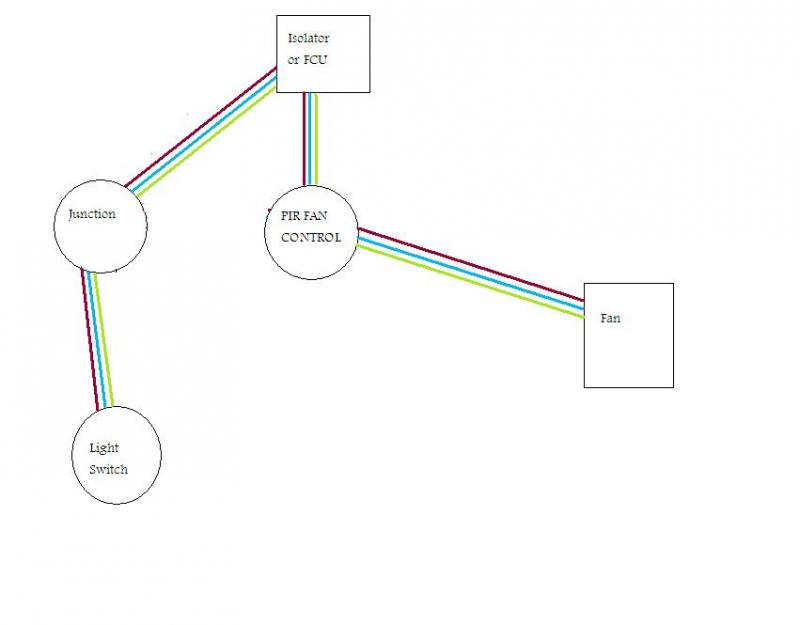- Joined
- 14 May 2013
- Messages
- 3
- Reaction score
- 0
- Country

Hi,
I had a fan installed a few months ago, which turns on and off with the light. The plan was it would sort the mould out in the room, and it did for a time but started creeping back. I want to install a purpose fan controller/switch which includes pir and run on timer functionality. The switch doesn't require a switched live.
Can i connect a junction box in the loft to where the light switch currently terminates, then wire out of the junction to the light switch, and then to the pir switch? There is a window in the room, and the ceiling where it would be positioned is a good 9 maybe 10 foot high. Because there is a window i was hoping i could do away with the need for an isolation switch, so there was know way of turning off the fan on purpose or accidentally. The property is 140 years old, so condensation has been an issue in the past before i upgraded the ventilation. I have done 2 very rough diagrams, one incorporating an isolator switch, and the other im hoping will be ok since there's a window in the room. All the wiring is up to part P, i had a consumer unit fitted a few years back, and NICEIC signed it off as well as my property was chosen during the contractors audit.
Cheers
Darren
I had a fan installed a few months ago, which turns on and off with the light. The plan was it would sort the mould out in the room, and it did for a time but started creeping back. I want to install a purpose fan controller/switch which includes pir and run on timer functionality. The switch doesn't require a switched live.
Can i connect a junction box in the loft to where the light switch currently terminates, then wire out of the junction to the light switch, and then to the pir switch? There is a window in the room, and the ceiling where it would be positioned is a good 9 maybe 10 foot high. Because there is a window i was hoping i could do away with the need for an isolation switch, so there was know way of turning off the fan on purpose or accidentally. The property is 140 years old, so condensation has been an issue in the past before i upgraded the ventilation. I have done 2 very rough diagrams, one incorporating an isolator switch, and the other im hoping will be ok since there's a window in the room. All the wiring is up to part P, i had a consumer unit fitted a few years back, and NICEIC signed it off as well as my property was chosen during the contractors audit.
Cheers
Darren


